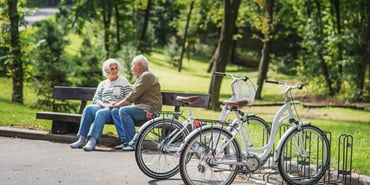
July is known as UV Safety Month; therefore, it’s a great time to learn more about safe sun exposure, including what the UV index means, when you should avoid being in the sun, and how it can play a role in the development of skin cancer. For most people, summer fun includes summer sun. As you soak up those warm rays, however, keep in mind that prolonged exposure to the ultraviolet (UV) radiation of the sun can be harmful to your skin.
Understanding the UV Index
Did you know that the risk of UV damage to your eyes and skin is dependent upon where you live? In the United States, the strength of UV radiation is measured by the UV Index, which provides a forecast of the expected risk of overexposure to UV radiation from the sun based on geographical location.
The National Weather Service calculates the UV Index daily for most zip codes across the country, measuring it on a scale of 0 (low) to 11+ (extreme). While it is a good idea to practice sun safety for all UV index values, it is wise to be extremely cautious when index values are 7 or higher. The UV index in Portland, OR is historically highest in the month of July, averaging 8 on the UV index scale.
Consider staying indoors on days where the UV index reaches very high levels (10+) as your eyes and skin can burn within minutes. Factors such as ozone depletion, as well as seasonal and weather variations, can affect the daily UV index.
Being Safe With Sun Exposure
There really is no definitive answer regarding how much sun exposure is safe. The sun provides vitamin D as well as the opportunity to get outdoors and be active--both of which are essential for optimal health. However, too much exposure can raise your risk of skin cancer.
This doesn’t mean you have to avoid the sun completely. It just means you should take the necessary precautions to keep your skin safe each and every time you step out into the sunshine.
One way you can limit your exposure to an excessive amount of sun is to stay indoors between the hours of 10 am and 4 pm, which is when UV light is the strongest. If you are unsure about the strength of the sun’s rays, check the UV index in your area. You can also perform the shadow test: if your shadow is shorter than you, the sun’s rays are the day’s strongest.
In addition to seeking shade indoors, you can also:
- Cover up your arms and legs with clothing -- the darker the better to block out more of the UV rays.
- Wear a wide-brimmed hat that covers your neck and ears
- Use a broad spectrum sunscreen that is SPF 30 or higher, reapplying every 90 minutes or more if you’re in the water.
- Protect your eyes with UV-absorbing sunglasses
If you are concerned about lowered vitamin D levels, look to dietary sources and supplements rather than extra time in the sun that could cause your skin damage.
UV Rays and Skin Cancer
Most skin cancers are a direct result of overexposure to the UV rays of the sun. UV radiation is considered the main cause of nonmelanoma skin cancers, including basal cell carcinoma and squamous cell carcinoma, the two most common types of skin cancer. Both of these cancers tend to be found on sun-exposed parts of the body and it is thought that their occurrence is tied to continuous sun exposure throughout a person’s life. This also includes exposure to artificial sources of UV rays that are used in indoor tanning.
It is important to remember that UV rays can still affect you on cloudy days, so be sure to practice sun safety even when the rays aren’t shining bright.
Skin cancers can show up in many shapes and sizes, so it is a good idea to check your skin regularly for any unusual changes. If you have any concerns about the health of your skin, make an appointment with your doctor or dermatologist to have it checked out.
Fun in the sun can come with risks, but by practicing sun safety you can enjoy your time outdoors.
Sources:
- https://www.cdc.gov/cancer/skin/basic_info/prevention.htm
- https://www.cancer.org/cancer/skin-cancer/prevention-and-early-detection/uv-protection.html
- https://www.cancer.org/cancer/cancer-causes/radiation-exposure/uv-radiation/uv-radiation-does-uv-cause-cancer.html
- https://www.skincancer.org/prevention/uva-and-uvb


